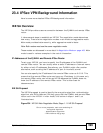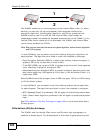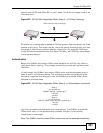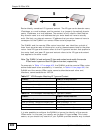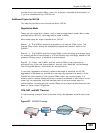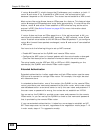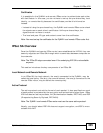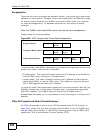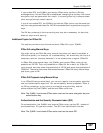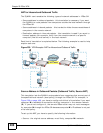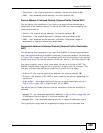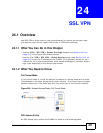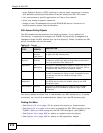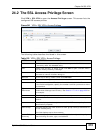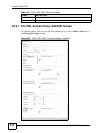
Chapter 23 IPSec VPN
ZyWALL USG 50 User’s Guide
407
If you enable PFS, the ZyWALL and remote IPSec router perform a DH key
exchange every time an IPSec SA is established, changing the root key from which
encryption keys are generated. As a result, if one encryption key is compromised,
other encryption keys remain secure.
If you do not enable PFS, the ZyWALL and remote IPSec router use the same root
key that was generated when the IKE SA was established to generate encryption
keys.
The DH key exchange is time-consuming and may be unnecessary for data that
does not require such security.
Additional Topics for IPSec SA
This section provides more information about IPSec SA in your ZyWALL.
IPSec SA using Manual Keys
You might set up an IPSec SA using manual keys when you want to establish a
VPN tunnel quickly, for example, for troubleshooting. You should only do this as a
temporary solution, however, because it is not as secure as a regular IPSec SA.
In IPSec SAs using manual keys, the ZyWALL and remote IPSec router do not
establish an IKE SA. They only establish an IPSec SA. As a result, an IPSec SA
using manual keys has some characteristics of IKE SA and some characteristics of
IPSec SA. There are also some differences between IPSec SA using manual keys
and other types of SA.
IPSec SA Proposal using Manual Keys
In an IPSec SA using manual keys, you can only specify one encryption algorithm
and one authentication algorithm. You cannot specify several proposals. There is
no DH key exchange, so you have to provide the encryption key and the
authentication key the ZyWALL and remote IPSec router use.
Note: The ZyWALL and remote IPSec router must use the same encryption key and
authentication key.
Authentication and the Security Parameter Index (SPI)
For authentication, the ZyWALL and remote IPSec router use the SPI, instead of
pre-shared keys, ID type and content. The SPI is an identification number.
Note: The ZyWALL and remote IPSec router must use the same SPI.



